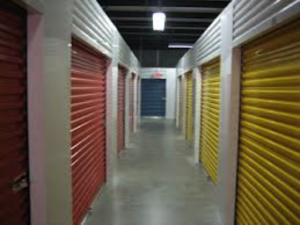When your home isn’t peaceful, a place you can retreat to, or a safe haven from the outside world, it will affect you, but how is up to you.
As a professional organizer, I get calls all the time from people expressing thoughts of overwhelm and sharing other complaints such as:
“I can’t live this way anymore”
“I feel stuck”
“I am drowning”
“I don’t know how this happened”
They also tend to express feelings of shame, distress, self doubt, low self esteem, loneliness, and frustration — to name a few! At this point, I reassure them that these feelings aren’t who they are, or who they’ve become. Clutter can’t take away their ‘Greatness’ as a person!
Immediately, I want to assist these people in seeing for themselves that the disorganized mess they have can be fixed with effort and commitment. After listening to their tale, I usually hear some version of “Life wasn’t always this way for me,” or, “My space used to be…” At this point in the conversation, I give a few positive suggestions such as:
It is important to keep in mind that change is a constant, and at times, things become unmanageable temporarily. You can physically clear your clutter and clear the ‘mind chatter’ by having help, support, focus, and intention. One key is to have Patience with yourself. It’s important to take stock of the positives, your accomplishments, and what you are striving to achieve. In doing so, self doubt, shame, loneliness, and low self-esteem can disappear as quick as the clutter, if you are willing to LET IT GO! Remind yourself that life changes and so do you!
Remember this, these thoughts and feelings don’t represent who you are or who you think you have become! The clutter does not define who you are. Each one of us is a perfect, unique energy force.
Please remember your ‘Greatness’!
 The NAPO Annual Conference & Organizing Expo is the professional development event for organizers who wish to further their education, discover industry advancements, and form lasting friendships with fellow organizing professionals. It is held in various cities throughout the country each spring and consequently can be a costly investment for our members. Through the replica watches generosity of our first NAPO-GPC scholarship partner, Marty Ingram, iphone 6s remplacement écran owner of PhillyJunk.com, a scholarship fund was created in 2012. Since then, the Scholarship fund has enabled three NAPO-GPC chapter members to attend the annual NAPO Annual Conference & Organizing Expo. In order to be eligible, the member must currently hold a volunteer position within the chapter and attend regular meetings. Covered expenses include conference registration fees, airfare, dining costs, and hotel accommodations – a tremendous benefit to our dedicated members who take initiative in our chapter and show dedication to our profession. Last year our winner was Jen Bowen of Contemporary Organizing. Here’s what she had to say about her experience:
The NAPO Annual Conference & Organizing Expo is the professional development event for organizers who wish to further their education, discover industry advancements, and form lasting friendships with fellow organizing professionals. It is held in various cities throughout the country each spring and consequently can be a costly investment for our members. Through the replica watches generosity of our first NAPO-GPC scholarship partner, Marty Ingram, iphone 6s remplacement écran owner of PhillyJunk.com, a scholarship fund was created in 2012. Since then, the Scholarship fund has enabled three NAPO-GPC chapter members to attend the annual NAPO Annual Conference & Organizing Expo. In order to be eligible, the member must currently hold a volunteer position within the chapter and attend regular meetings. Covered expenses include conference registration fees, airfare, dining costs, and hotel accommodations – a tremendous benefit to our dedicated members who take initiative in our chapter and show dedication to our profession. Last year our winner was Jen Bowen of Contemporary Organizing. Here’s what she had to say about her experience:
“In 2014, I was the lucky winner of the NAPO Conference Scholarship, sponsored by PhillyJunk.com. This year’s NAPO Conference was a truly spectacular experience. Amidst the gorgeous Arizona landscape, I was treated to outstanding presenters and effortless camaraderie. During the professional workshops, I gained information and skills that will help me better serve my clients. Some of the many intriguing topics included: student organizational tools, productivity apps and home inventory software. Additionally, I learned strategies to develop my own business model and enjoyed motivating presentations from veteran organizers.
It was a great honor to represent our chapter at the national conference this year. I encourage all eligible NAPO-GPC chapter members to apply for the 2015 Scholarship, and I invite all those interested in a professional partnership with NAPO-GPC to consider a contribution to the Scholarship Fund.” ~Jen Bowen
Thank you to our 2014 NAPO-GPC Scholarship sponsor, PhillyJunk.com.
 When trying to save time and money at the grocery store, the first step is to start with your menu plan. Plan your meals by making a weekly menu. Of course you can also do bi-monthly or monthly if you feel so inspired, but if this is a new process start with a week until you get comfortable with this idea.
When trying to save time and money at the grocery store, the first step is to start with your menu plan. Plan your meals by making a weekly menu. Of course you can also do bi-monthly or monthly if you feel so inspired, but if this is a new process start with a week until you get comfortable with this idea.
For each day of the week, plan what your meals will be including breakfast, lunch, snacks, and beverages. Now check to see if you have written any specialty recipes down that may require additional ingredients such as spices, etc. Start making your grocery list based upon your menu.
Check your pantry and make sure you have all of the ingredients or food items you need to accomplish your meal plan for the week. If you do not, write them down on your grocery list. This way of planning will keep you organized so preparing and cooking your meals will go off without a hitch. Being organized will help to prevent the need to run back to the store for forgotten items or ingredients.
Keep a running grocery list during the week for any supplies that run out or are getting low. Add these items to your grocery list. This is an especially helpful household task for when you have multiple family members. If you used the last of something, put it on the list, do not let the next person needing that item be the one to find out it’s not there when they need it. A detailed grocery list helps you from forgetting items that you may need.
Do you use coupons? If not skip this paragraph. If so, keep your coupons in a file or a convenient place such as your pocketbook. Organize the coupons in the same manner you organized your list; by the order of where those items will be found in the aisles. Check that you are purchasing the exact brand, item, size requirement, etc. from that coupon as you are selecting that item. This will save you time and embarrassment at the checkout counter from choosing an incorrect item. Also check for expiration dates on your coupons.
Now if you want to save time at the grocery store take this list one step further and organize the list based upon the grocery store aisles where you do your shopping. This way you are able to cross items off the list as you go up and down the aisles. This will help you from going back and forth through the aisles if you skip something. It also helps from forgetting items.
To recap:
Planning your menu and grocery list in an organized manner will not only help you become an organized shopper, it will save you time and money as well. Happy Shopping!
“Help! I can’t stand it anymore! My office is a disaster. Papers are piled everywhere. I don’t know where things are. I don’t know what supplies I have until I run out. My bulletin boards have announcements for events that happened two years ago attached to them. I’m behind on my work, and I hate being in my office. My life is a mess!”
“Was this a phone call I received from a potential client?” you may ask. No. This is what I said two weeks ago when I felt like I was drowning in paperwork, and my life was a mess. “But wait,” you exclaim. “You’re a Professional Organizer. You know how to organize stuff. Why can’t you just organize your office?” The answer is that even we, who are experienced and proficient organizing other people’s things, sometimes cannot do it for ourselves.
Every morning I would walk into my office with incredible determination. “This will be the day that I finally and completely organize my office and my life!” But when I walked into my office, something happened. I looked at the piles of paper and the disorganization, and I became paralyzed with dread.
It doesn’t matter whether the area that is disorganized is an office, a kitchen, a bedroom or a play room. Sometimes it just feels as though as much as you really, really want to get organized, you’re just having a hard time doing it. So I asked myself what I would tell a prospective client if they called me with a similar situation.

But what do you do if you can’t get yourself to commit to tackling that cluttered area for even five minutes? Take a tip from a professional who has been-there-done-that. Either call a friend who is nonjudgmental and willing to help or call a professional; which is what I did. I figured that if I call a doctor when I’m sick and go to the dentist when I have a toothache, I should call a professional organizer when it feels like my (insert name of area here) needs organizing. What about you? Take just 5 minutes and call for help. Now? Yes! If not now, when?
 I love the idea that someone can use a storage unit as a business location, a man cave, a wine cellar, or as a place to store their cool sports car.
I love the idea that someone can use a storage unit as a business location, a man cave, a wine cellar, or as a place to store their cool sports car.
I love that a college student can use a storage unit to store their dorm rooms over the summer and that someone can store excess furniture while their house is being marketed for sale.
I love that a builder can use a storage unit to store supplies while they are doing a renovation.
I hate the idea that people are using storage units to store old, dirty appliances, inexpensive furniture, and things that are eventually going to go in the trash, get donated, or get sold.
I hate that people abandon their units with valuable items in storage units and that there are reality TV shows based on this.
During the past couple of weeks, we have worked in storage units, and I am so glad we could help clients get out from under the stuff that was being stored— which had less monetary value than the month’s rent of the unit.
Understandably, people go into storage units for a valid reason initially. In the words of my eloquent husband, “storage units can take on a life of their own.” The items being stored take root in the unit, and the bill is on autopay. This makes it easy to forget or avoid the whole thing.
Many times people no longer know what is in their unit— a hint to me that there is minimal value, emotionally and financially.
Before you make the decision to take on a storage unit, think of the following:
If you answer these questions and can develop a plan, rent the unit.
I hope this advice helps you make a good decision and prevents you from being burdened by a storage unit that takes on a life of its own. If renting a storage unit is the right thing for you, I hope that you have picked up a hint or two to simplify the process.
 Every email that comes in is an opportunity. Every Facebook article is a worthwhile read. Every free 60 page ebook is a life saver. But come on now, if you read everything you could read you would NEVER BE DONE and on top of that YOU WOULD NEVER GET TO WHAT IS MOST IMPORTANT.
Every email that comes in is an opportunity. Every Facebook article is a worthwhile read. Every free 60 page ebook is a life saver. But come on now, if you read everything you could read you would NEVER BE DONE and on top of that YOU WOULD NEVER GET TO WHAT IS MOST IMPORTANT.
I’ve been a long-time advocate for short and sweet, so I always try to keep everything I share manageable and digestible in 5 minutes or less. That’s what I can do for you.
What can you do for yourself?
If you choose to spend your time on things that just pop up and come your way you will NEVER get to the work you want to do. To be a high performer be clear on what is important and spend your time on what matters. All the rest? JUST SAY NO – LET THEM GO.